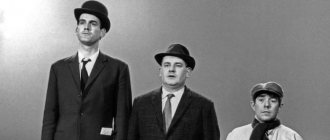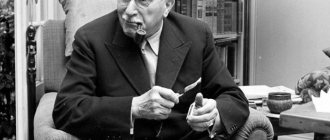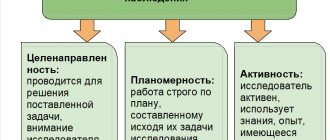Behavioral portrait based on observational data.
The observed object is female, 35 years old, higher medical education. He does not work in his specialty, but in a field close to medicine. Married, has an 11-year-old son. Wealthy family.
- Appearance.
Always very neat. Medium-long haircut, business suit, trouser or with a skirt. Shoes with stable heels. It is clear that she dresses in a way that is comfortable, discreet, but makes sure that things suit her. Everything is always clean and unwrinkled.
- Pantomime.
Posture is straight, does not slouch, walks smoothly, confidently, steps are firm, does not swing arms when walking. A characteristic gesture when thinking is to touch one’s chin. In general, there are not very many gestures, mostly open ones, from the hand or from the shoulder.
- Facial expressions.
The general facial expression is calm. He grimaces a little. Smiles often. In general, she rarely changes her facial expressions; more often her face is either calm or with a smile. Sometimes, when a question causes difficulties, or in thought, his eyebrows frown slightly.
- Speech.
She constructs sentences very competently and is polite. There are no filler words. Speaks in short and succinct sentences, calmly and judiciously. When he is having fun, he raises his voice and laughs loudly. There are few pauses in speech.
- Relationships with others.
Extroverted, sociable, has many acquaintances, energetic, focused on interacting with other people.
He makes contact very easily, jokes, and quickly puts people at ease. He dominates in communication, but listens to his interlocutor with pleasure.
Depending on the people around her and the situation, behavior may change: if these are close people, an informal home environment, she is relaxed and cheerful, jokes a lot. If it is a work environment, it becomes more serious and calm.
However, the general manner of communication, intonation, pace and volume of speech, and facial expressions do not change. If the person with whom she is communicating speaks too slowly or quietly, she can readjust and adjust to the pace and volume that is comfortable for the interlocutor.
This is a cheerful, active, energetic, cheerful, cheerful person. She is open, sociable, sociable, loves natural things and simple sensual joys. Thus, it is well adapted to society.
6. Attitude towards yourself.
She is calm about herself, knows that she has some shortcomings, and accepts them. She is a realist and tries to soberly evaluate herself. He thinks little about his appearance, but is careful about his appearance. However, regarding the appearance and clothing of others, she says that she only likes certain things. As for opportunities, he does not strive for high achievements. In general, the professional sphere and work do not come first for her; family is a priority here.
On the other hand, she is concerned about her social status and experiences some anxiety as a result of which she is not critical enough of herself, and also tends to constantly be in the spotlight, she seeks recognition and support. At the same time, in some situations she lacks insight, she does not understand the motives of other people well, does not know how to be cunning, does not know how to behave and what others expect from her.
Hypothesis.
-The observed object is a cheerful person, easily finds contact with other people, easy to communicate.
— In a new situation with new people, he experiences some discomfort, but quickly adapts.
- Loves order in everything.
- More family oriented.
— Her loved ones play a huge role in her life. He bases his tastes and opinions on them.
— Well educated, high learning ability.
- This is a creative person.
- Prone to introspection.
“Career does not play a big role for her; she strives for comfort rather than success.
Observation procedure.
What is it and what is it for?
A psychological portrait is a verbal written interpretation of a personality.
This characteristic allows you to get a general idea of a person’s individual qualities and predict his behavior.
This psychological technique is actively used in professional activities , as well as for personal purposes.
Recruitment specialists analyze the abilities of job applicants, teachers, in order to successfully organize the educational process, draw up psychological portraits of the class, managers identify the personal qualities of subordinates, etc.
Each person can independently try to create a description of his personality or study someone from his environment.
Of course, to obtain the most reliable results, you should contact specialists. The professional psychological portrait of a psychologist will fully reflect all the individual characteristics of the subject.
Having information about key personality qualities, you can determine the most suitable type of activity, level of self-esteem, degree of openness to communication, determination, etc.
Basic criteria for compiling a psychological profile
Before drawing up a psychological portrait of a person, it is advisable to familiarize yourself with its components. Due to the uniqueness of each personality, basic and guiding qualities are inherent. Main components include:
- temperament;
- character;
- personal properties.
Guide components include:
According to their sensitivity, representatives of society are classified into several categories:
- Orientation for today. The person easily gets used to the role and adapts well. He is characterized by quick decision making. A leadership position is suitable for such a person.
- Focus on the past. A person acts in accordance with accepted rules and laws. Performs well in executive positions.
- Future-oriented. It is difficult for a person to join a team and does not recognize hierarchy. But such people often put forward progressive ideas. Independent work (“your own boss”) is suitable for them.
In addition to the criteria considered, before drawing up a psychological portrait of a person, it is necessary to determine the following personality traits.
Key elements
The psychological portrait includes a description of the following personality traits:
- Temperament . It is customary to divide people into sanguine, choleric, melancholic and phlegmatic. Usually, temperaments are rare in their pure form; more often, two similar types are combined in a person. Choleric people are active and purposeful, melancholic people are sensitive and vulnerable, sanguine people are extremely friendly and sociable, and phlegmatic people are reliable and calm. Depending on the rhythm of mental processes, people participate in activities, behave in relationships and enter into communication differently. Temperament is an innate, not an acquired quality. That is, a phlegmatic person will never become a choleric person, regardless of the degree of influence of external circumstances. Only some adjustment of the initial data is possible.
- Character. This personality trait is also manifested in the presence of stable behavioral traits. But character is formed to a greater extent as one grows up under the influence of life circumstances and upbringing.
And although its basis is made up of traits inherited from previous generations, they are largely supplemented by acquired moral and moral attitudes.Thus, children from the same parents who end up in different foster families may grow up completely different from each other due to differences in upbringing and living conditions. A person's character can be described both from a positive and negative side. For example, an individual can be kind, open, sociable, sympathetic and at the same time lazy, cowardly, and touchy.
- Capabilities . Usually abilities are divided into spiritual, physical and social. Primary are physical abilities - level of health, endurance, skills and achievements. Spiritual development occurs as one receives education and assimilates moral and cultural norms. Social skills develop through education. This is the ability to communicate, openness, discipline, responsibility, punctuality, etc.
- Intelligence .
A certain level of intelligence is inherent in a person from birth. History knows many cases when great geniuses appeared in absolutely ordinary families with undistinguished parents. Each individual has the opportunity to develop their intellectual abilities by acquiring new knowledge and practical experience, but initial natural data still plays an important role. Gifted, talented or brilliant people discover their abilities in a certain area at an early age. - Emotions . The emotionality of a person is expressed in the ability to reflect their experiences and moods. Depending on the degree of emotionality, an individual perceives the surrounding reality in a certain way and forms a response. Emotions help people understand each other better. Correctly assessing the state of your interlocutor makes it possible to adapt to his mood. Even with language, cultural or intellectual barriers, people always recognize the emotions of joy, sadness, fear, anger, etc. in the same way.
- Will . It is the developed volitional qualities that form the core of character and allow a person to achieve success in life. Purposefulness, self-control, determination and independence are all characteristics of a strong and self-sufficient personality. Even with favorable living conditions and the presence of outstanding intellectual abilities, a weak-willed individual will not be able to achieve significant results. Due to laziness, lack of initiative and lack of self-discipline, he will constantly miss out on favorable opportunities.
- Communication skills .
Any person, regardless of his age, social status and level of development, should be able to find a common language with others. People's communication abilities are developed to varying degrees. Not only natural data, but also acquired skills are of great importance. For example, a psychological portrait of a manager is guaranteed to contain information about the high level of development of the subject’s communication abilities. An employee’s professional activity is based on communication with people, and without communication skills it is impossible to achieve results in this area. - Self-control . This quality directly depends on the degree of development of volitional abilities. When hiring specialists who will perform their duties under stressful conditions, the level of self-control is one of the key characteristics.
- Self-esteem . This is the degree of confidence in yourself and your abilities. It is usually customary to talk about normal, low and high self-esteem. In the first case, a person evaluates himself most objectively. With low self-esteem, there is a lack of self-confidence and excessive self-criticism, and with high self-esteem, there is an overestimation of one’s own capabilities and achievements.
- Motivation .
An internal emotional state that motivates a person to action. The motive may be to obtain the desired position, material gain, position in society, the favor of significant people, etc.
Read also
4.3. PORTRAIT OF A PRIMITIVE
4.3. PORTRAIT OF A PRIMITIVE If a noble man, a hero, a personality, has been described in the literature of all times and peoples, then the image of a man of the masses can be found, with rare exceptions, only in writers of the twentieth century. This is natural, because it was in the twentieth that this burdock and
Behavioral (cognitive-behavioral) approach
Behavioral (cognitive-behavioral) approach Behavioral therapy as a systematic approach to the diagnosis and treatment of psychological disorders arose in the late 50s. last century. In the early stages of development, behavior therapy was defined as an application
Weak behavioral control
Poor Behavioral Control In addition to being impulsive, psychopaths are sensitive to slights and insults. Most of us are subject to strong constraints on our behavior. Even if you feel like reacting with hostility, you will still
Portrait of the day
Portrait of the day Make a to-do list for your normal working day from morning to evening. Take your real, tomorrow's day as a basis, but it is quite acceptable if you remember your usual, already past day. So...You woke up: where do you start your day? What are the first things to do?
Behavioral aspect
Behavioral aspect The behavioral aspect of morality is associated with the manifestation of morality in behavior, with behavior that is moral, approved and socially acceptable. Exactly what the criteria are for determining whether behavior is “moral” is complex and highly
Personality portrait[77]
Portrait of a personality[77] What is a human being? The deeper our understanding of a person, the more effective our consultation will be. The concept of “man” is much broader than a simple bodily shell, than the business in which he is engaged, than his social position, and the concept
Cognitive-behavioral approach to personality disorders
Cognitive-behavioral approach to personality disorders More recently, behavioral (Linehan, 1987a, b; Linehan, Armstrong, Allmon, Suarez & Miller, 1988; Linehan, Armstrong, Suarez & Allmon, 1988) and cognitive-behavioral psychotherapists (Fleming, 1983, 1985; Fleming & Pretzer, in press; Freeman, 1988a, b; Freeman & Leaf, 1989; Freeman, Pretzer,
Behavioral rapport
Behavioral Rapport When necessary, Erickson is willing to go much further than simply verbally acknowledging the client's beliefs. Due to their beliefs, the characteristics of their nervous activity or acquired habits, people tend to exhibit characteristic
Behavioral way to open communication
Behavioral Way of Opening Communication Women extol men's modesty, but dislike modest men, Thomas Fuller. The next step in the development of our experience in starting a conversation is behavioral phrases. In essence, they are very similar to contextual ones.
Status and behavioral complex
Status and behavioral complex How should an individual behave in the army? This is the main problem of an individual entering a new team. Even in reception centers, young men try to behave according to certain leadership stereotypes: to look their best
Portrait
Portrait The internal content of an artistic image usually corresponds to its appearance. The character of the character is closely related to his portrait. The appearance of the characters, their clothes, age, first and last names - all this plays a role in creating a holistic poetic
Task 2 Make a portrait of the man who suits you!
Task 2 Make a portrait of the man who suits you! The most important thing in life is love for a man, if, of course, he has good health and a large living space, and the money will come by itself, as long as the work is good. Folk wisdom Before your dating training begins
How to compose?
How to create a psycho-portrait of me or someone else?
It is advisable to contact specialists , but it is also realistic to cope with the task on your own. The object of study can be one’s own person or another person about whom it is necessary to obtain comprehensive information.
Popular questionnaires will help you correctly leave a psychological portrait :
- J. Rotter test;
- questionnaire L.N. Sobchik;
- R. Cattell's test;
- Leonhard characterological questionnaire.
In addition to questionnaires, other personality assessment methods are also used.
So, you can create a psychological portrait from a drawing, analyze handwriting, conduct a test for non-verbal communication, solve logical riddles, etc.
The simplest research option is to analyze the properties of an object. In this case, it is enough to give a step-by-step description of the ten key personality traits listed above on a piece of paper.
In this case, the objectivity of the assessment is of great importance. It is not always possible for a person to evaluate himself or someone around him as impartially as possible.
Building your psychological portrait will help you understand your own personality, decide on the appropriate type of professional activity, and objectively evaluate the people around you.
Principles of compiling psychological characteristics
Before drawing up a psychological portrait, you need to study a number of rules:
- the way of studying a person should be based on the purpose of its compilation, age, education;
- psychological characteristics are based not only on the results of the interview of the subject with a psychologist, but also on the conclusions of questionnaires and tests;
- a conclusion on a person’s psychological portrait is issued based on a comparison of the conclusions of the tests conducted, from the relationship;
- a psychological portrait requires the creation of suitable comfortable conditions for the subject during the research process;
- it must be understood by a person who is not a specialist in this scientific field.
Techniques used to create personal characteristics:
- Nemchin, Bas-Darka, Spielberg tests, SAN method (determination of the emotional-volitional area);
- Wechsler test, intellectual testing, Schulte tables (definition of the cognitive-cognitive sphere);
- sociometry, methods of Leary, Bales, Etkind testing (definition of the interpersonal-social area);
- 14 basic needs according to Murray, types of labor incentives according to Gerchikov, the Eagle method (identification of needs, incentives, motivation).
Projective methods used in drawing up an example of a psychological portrait of a person, studying the inner world of a person, his projection onto the outside world:
- Rorschach blots;
- animal print;
- psychogeometric research;
- image “man, house, tree.”
Personality questionnaires used in drawing up an example of a psychological portrait of a person by determining personal qualities:
- MMPI (both short and full versions of the questionnaire are used);
- Cattell questionnaire;
- Leonard's test.
A psychological portrait is an example of a conclusion drawn up based on the research completed:
- initials, field of activity, age of the person;
- the purpose of testing (for example, compliance of the candidate’s qualities with the requirements of the proposed position);
- methods used in the study;
- human behavior exhibited during testing (noticeable agitation, trembling, etc.);
- test results;
- psychological characteristics of the person under study, prognostic data about his behavioral qualities;
- conclusions, recommendations.
Plan
When compiling a person’s profile, you should adhere to the standard plan:
- Individual data. Age, gender, health status, physical parameters.
- Social data . Marital status, profession, education.
- Short biography. Here a person describes important moments in his life that had a significant impact on him (relationships with parents, shocks and conflicts, etc.).
- Individual characteristics . 10 key personality traits are analyzed.
- Conclusions . A forecast is made for the further development of the individual, problems are identified and ways to solve them are determined.
Psychological portrait of a personality: a ready-made writing sample.
An example of a description of a famous person
World historiography contains a large amount of information about various famous people.
Their psychological portraits are of particular interest.
Analysis of the individual characteristics of historical figures is carried out on the basis of the study of written testimonies of contemporaries, personal diaries of the people themselves.
With the help of physiognomy (analysis of character traits based on facial features), a psychological portrait is even drawn up from a photo.
Of great interest is the personality of Napoleon Bonaparte . His psychological portrait, compiled according to the above plan, looks like this:
- Man born in 1769 . Height - 169 cm. He suffered from epileptic seizures.
- Emperor of France , commander and statesman. Was married twice.
- Since childhood, he showed a love of reading . He experienced problems communicating with peers, because of whose bullying he was forced to spend most of his time in solitude. From an early age he showed interest in military affairs.
- Hot-tempered, purposeful, merciless, efficient, disciplined, selfish. He processed information and made decisions with lightning speed. He was an excellent tactician and strategist . Didn't like talking to people. Demonstrated a contemptuous attitude towards others. He easily fell into a state of anger, often developing into fits. Despite the presence of many internal contradictions, he outwardly tried to give the impression of a confident person. The main motive of activity is the thirst for power.
- An influential position in society and the presence of great power aggravated negative character traits that arose at an early age. Internal self-doubt gave rise to anger and contempt for others.
Behavioral portrait
Behavioral portrait - what does it mean?
This is a psychological characteristic of human behavior that he demonstrates in different life situations.
Such information can be obtained as a result of observing the object, as well as through a conversation with the person himself and his close people.
The behavioral portrait includes the following information:
- appearance;
- pantomime;
- facial expressions;
- speech;
- attitude towards others;
- attitude towards oneself;
- behavior during main activities;
- reaction to conflicts.









